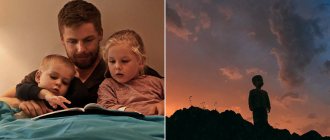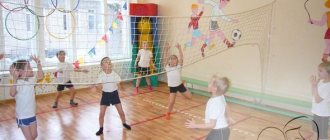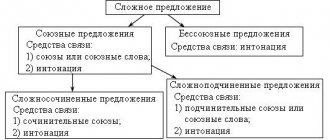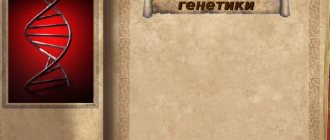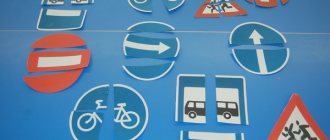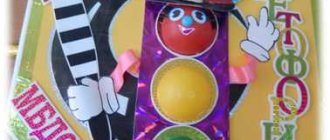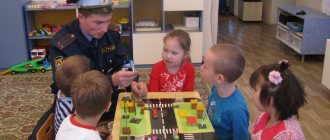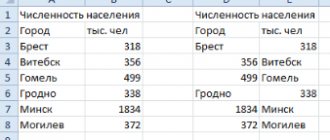LiveInternetLiveInternet
Are we getting enough positivity from life? No matter how sad it may sound, a huge mass of people do not receive bright emotions in everyday life, waking up on weekdays for work, coming home when it has long been dark outside.
It is only in the movies that reality is presented in the form of an ideal picture - everyday life can drag on and kill individuality. It is possible to find a way out of this situation; the most important thing is to act and not sit still. Thousands of women were able to discover a new world, whose name is dancing.
First of all, dance classes give everyone the opportunity to open up and look inside themselves. In real life, many clerks, engineers or bank employees experience a lot of complexes, are embarrassed about their body, and cannot move gracefully. Dancing helps them become bolder, reveals their own sensuality, and allows them to open up. In addition, fiery rhythmic music has a positive effect on a person’s emotional state, touching the deeply hidden strings of the soul.
We must not forget that dancing is an ideal opportunity to keep yourself in excellent physical shape. Sedentary work, a sedentary lifestyle, poor nutrition – all these factors contribute to the gain of excess fat mass. A person quickly gains weight, his figure loses its former shape. A little free time, a great desire, a great mood, mental positivity - this is what you need to get rid of excess lipid layers, recharge your batteries, and increase your self-esteem. Everyone will be able to find something of their own in dancing, fully corresponding to their inner spirit and temperament.
The opinion that only young people can dance energetically is incorrect. The doors of the clubs are open to everyone - even representatives of the older age group can join the world of dance. If you don’t want to go to a club, dance at home, because dancing acts as excellent gymnastics for the whole body - this way breathing is trained, and the activity of the cardiovascular and endocrine systems is stimulated. www.maxi-dance.org
*** People of all ages find a kind of “outlet” from their boring everyday life by plunging into the enchanting world of dance. And to make it easier for you to join it, let’s learn the simplest dance movements together with modern dance teacher Kristina Ashikhmina - swing and steps.
Join the movement!
Shall we dance?
How to learn to dance Go-Go at home
How to make a body wave
Salsa with Evgeniy Papunaishvili
Description of basic positions and dance movements for preschoolers
Anastasia Moiseikina
Description of basic positions and dance movements for preschoolers
Description of basic positions and dance movements for preschoolers
Starting leg positions :
• 1 foot position – heels together , toes apart
• 6th position - heels and toes together
For older people:
• 2nd position – feet shoulder-width apart, only the toes turned as far as possible to the sides.
• 3rd position – the supporting leg is placed at an angle of 45 degrees, the heel of the non-supporting leg is placed in front of the middle of the foot of the supporting leg, also at an angle of 45 degrees.
• 4th position – the supporting leg is placed in the same way as in the 3rd position . The non-supporting leg is placed forward for the length of a small step at an angle of 45 degrees.
Starting hand positions :
• Palms on the waist, thumbs behind, fingers in front. Shoulders and elbows point to the sides
• The fingers are slightly clenched into fists, which are placed on the waist with the back side inward.
• "Shelf"
- arms bent at the elbows, folded in front of the chest.
The right hand rests on the left hand (the hand of the right hand lies on the elbow of the left and vice versa)
.
• Hands (shelf), the index finger of the right hand makes a “dimple”
on the cheek of the same name.
Types of step:
• Calm walking – the step begins with the toe of the outstretched leg, the toe turned to the side.
• Round dance step – this type of step is used in round dances. It differs from a simple step in its great smoothness and determination.
• Added round dance step – “once”
- a small step from the toe of the right
(left)
foot, to
“two”
- the toe of the other foot is placed against the heel of the supporting foot, etc.
• High step - the leg does not move forward, but bends at the knee and rises up at an angle of 90 degrees, the toe is stretched as much as possible.
• Step with a stomp in place - “once”
take a step in place with your left foot next to your right;
on “two”
- stomp with the right foot in front of the left.
Then on “one”
step in the place of the right one, placing it next to the left one;
on “two”
- left foot in front of right; everything repeats itself from the beginning.
• Variable step – performed for 2 measures in a two-beat measure or 1 measure in a four-beat measure. For once
and
“two”
of the 1st beat – long alternating steps from the toe of the right
(left)
foot.
On “one”
and
“two”
of the 2nd measure - three short alternating steps from the toe of the other foot.
on “and”
. The next step begins with the toe of the left foot.
Jumping:
• The starting position of the legs is the main stance , hands on the belt. After the push, land at the same point, placing your foot first on the toe, then on the entire foot. Other leg (non-supporting)
bent at the knee and pulled back. Change the supporting leg.
• Jumping – alternately jumping on the right and left legs.
• Jumping with legs thrown back - one time
- jump
- “point”
with the supporting leg, at the same time the non-supporting leg bends at the knee and is thrown back, heel up.
The non-supporting leg can be suspended or placed behind the toe with the heel up. To “two”
– change of supporting leg.
• Jumping with the legs thrown forward – the right and toe legs are alternately often thrown forward, as if boasting to the audience. The toe of the foot is pointed down towards the floor. Arms to the sides, palms facing forward with the inside.
• Side canter – the same as a side step, only on a jump.
• Gallop forward – the technique is the same, only moving forward rather than to the side. For once
- push and the right
(left)
leg is carried forward, landing from the toe.
The toe of the other foot is placed behind the heel of the supporting leg. On “two”
- repetition.
Dance moves
• "Spring"
- standing still, squat easily, often, continuously.
At the same time, the knees are slightly spread to the sides. The back is straight. This movement can be performed from the 6th position of the legs (on a “narrow path”
). In this case, the knees of the legs do not spread.
• Stomp – standing on your left foot, rhythmically stomp your right, slightly springing both
• "Picking"
:
bend
(left) (heel up)
;
At the same time, slightly bend the knee of your left (right)
leg.
Extending your right (left)
leg straight, place it on your heel.
Do a triple stomp, starting with the right (left)
foot.
• "Herringbone"
- starting position: legs -
“narrow path”
, arms -
“shelf”
,
“belt”,
etc. On
“one”
- turn the feet
(lifting your toes off the floor)
to the right at an angle of 450. on
“two”
- the same heels .
The movement can be performed both on straight legs and on a “spring”
. The back is straight.
• "Harmonic"
- legs together.
On “one”
- spreading the toes out to the sides, on
“two”
– spreading the heels, on
“three”
– spreading the toes again, and on “four” – spreading the heels. Then return to the starting position in the same order.
• "Stompers"
- starting position - legs together, slightly crouched, hands clenched into fists on the belt
(akimbo)
. Often take turns stomping your feet in place.
• "Comb"
- children stand in a checkerboard pattern.
At a distance from each other, facing in the same direction. At first, the second line passes forward through the first, stopping slightly ahead. Then the first (being behind)
passes forward through the second, stopping slightly ahead, etc.
Constructions
• Column – children stand behind each other, in one direction, keeping intervals between each other.
• Line - children stand next to each other, in the same direction, maintaining intervals between each other.
• Chain – children stand half-turned behind each other, holding hands.
Notes
- Item name:
- Dance steps should be light, smooth and small.
- When the heel lowers to the floor, the knee of the supporting leg softens slightly.
- The transfer of body weight from one leg to the other should be smooth and imperceptible.
- Make sure your feet are turned out and your toes are pointed.
- All steps are performed along the same line.
Pas (French) - step
Marcher (French) - walk, go, step; walk, move
Pas marché (Pa marché) – dance walking, dance step.
News
School physical education is a bit like torture. Jumping over a goat, doing pull-ups on a rope, everyone is tired and sweaty. It is not clear why and what is the benefit of this. Alexander Stradze and director of school No. 1788 Alexander Ezdov tell in the material of the educational resource “Mel” how to return interest in physics and make it truly useful .
Why is physical education needed and what should it be like?
In many Russian schools, physical education is a form of distraction from the child’s mental and psychological stress that he receives during other lessons. Switching to another type of activity is, of course, one of the functions of physical education. But that’s not her goal.
Physical culture, like culture in general, is intended to educate a person and ensure his quality of life. Physical education lessons should teach a child to use his potential correctly and rationally. His health, mood, performance and educational outcome depend on how effectively a student’s physical activity is organized. A child’s need for physical activity is, of course, much higher than three hours of compulsory classes. Therefore, physical education should go beyond the classroom and even the school. The teacher should help schoolchildren distribute physical activity in their daily life, and not just at school.
It is possible to make physical education lessons interesting only through an individual approach to each child. It is necessary to invite the student to engage in his favorite sport, something that is closer and more interesting to him. For example, if a child is already involved in a sports section, he should be exempted from physical education lessons altogether. And if he has health limitations, then you need to find a suitable form of exercise for him. This is an organizationally difficult process, but otherwise physical education will not become interesting, and will remain “physical education” and a reason to obtain a certificate of exemption from it by any means.
What will the new physical education be like?
Now there are all the conditions for the formation of a new model of a physical education lesson. Standards, on the one hand, set a certain framework, and on the other hand, they give freedom in constructing lessons. The concept of modernization of the academic subject “Physical Education” in Russia should soon be approved. But in any case, the main role in creating this model will be played by a particular school and its leader.
The main principles on which modern physical education should be built:
- The ability to choose the type of load that will be most effective for the child;
- Individual approach to each student during classes;
- Student and teacher work together to achieve planned results;
- The student can independently study his physical capabilities and track the dynamics of his development.
How technology can make physical education lessons more useful
In a mathematics lesson, no one is surprised if the teacher, depending on the level of the children, gives them different tasks: for some it is easier, for others it is more difficult. This is still rare in physical education. The problem is that it is not clear how much physical activity we give a child is adequate to his capabilities, and whether it will harm him.
Modern electronic devices can solve this problem. Today, a physical education teacher using a fitness tracker can understand the physical condition of each child during a lesson in real time. Is he loaded enough, are the exercises safe, is the body prepared. This data allows you to build an individual lesson strategy for each student for the lesson.
Usually at school several classes have physical education classes at the same time. Classes can be rearranged to accommodate different abilities and interests. For example, one group is engaged in team sports, while the other is engaged in “physical education on mats” - aerobics, strength training, and so on.
But physical development should not end in the classroom. If your child has his own fitness tracker, you can give him an individual task to take home, for example, run 5 kilometers or walk 15 thousand steps. This way we will teach him to take care of his body and play sports outside of physical education lessons.
What gadgets can be used in physical education
Fitness trackers.
They allow you to track distance traveled and other physical activities. Fitness trackers can help you set exercise goals and track your progress. Adidas, for example, developed the Zone fitness tracker specifically for physical education classes. Information about a child’s heart rate during a physical education lesson is stored in the cloud, and teachers can use this data to adjust the lesson plan.
Heart rate monitors.
A separate device, or part of a fitness tracker or smartwatch. Heart rate monitors help assess a child’s physical endurance.
Smartphones.
If children spend all their time on smartphones, why not use them in the classroom. Smartphones can serve as fitness trackers, special applications allow you to plan physical activity, and on YouTube you can not only watch cats, but also learn workouts and exercises.
Games.
Game consoles and augmented reality games can also be used in the classroom. Wii Sports games simulate sports games in front of a screen, while the child performs physical activity. And apps like Pokemon Go can be used to get kids moving more.
How Russian schools are already trying to diversify physical education lessons
1.
Before starting physical education classes, students of Moscow Lyceum No. 1502 undergo computer testing and receive information about their physical development and recommendations on how it can be improved. Such testing takes place three times a year, and based on its results, students can adjust their study program. Schoolchildren choose one of four sports: volleyball, basketball, athletics and aerobics. For students who cannot engage in physical education in the main groups, there are medical and preparatory groups.
2.
The Moscow “New School” and the TagSport football academy have launched football training for students. For now, all this is as additional classes, but they plan to make the program and basic physical education lessons more interesting. The idea is to replace regular physical training with full-fledged football training for those who are interested. Schoolchildren study under the guidance of professional coaches and participate in competitions on an equal basis with players of youth teams of football clubs.
3.
A physical education teacher at an economic lyceum in Berdsk, Novosibirsk region, turned physical education lessons into fitness classes. Schoolchildren perform sets of exercises from different areas of fitness (strength, dance aerobics, stretching, classical aerobics), which help develop endurance, jumping ability and flexibility.
Text: Ilya Kabanov, “Chalk”
